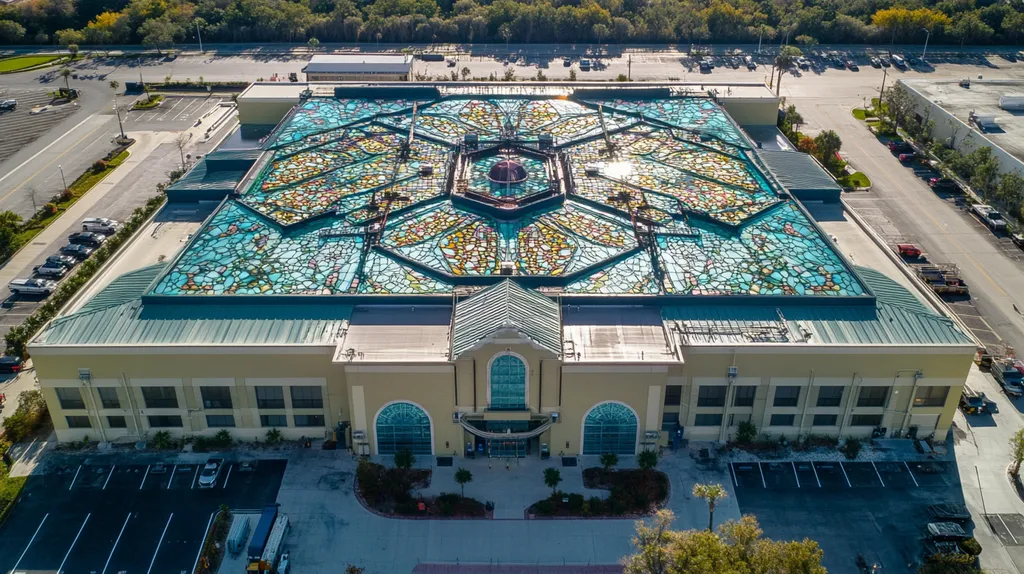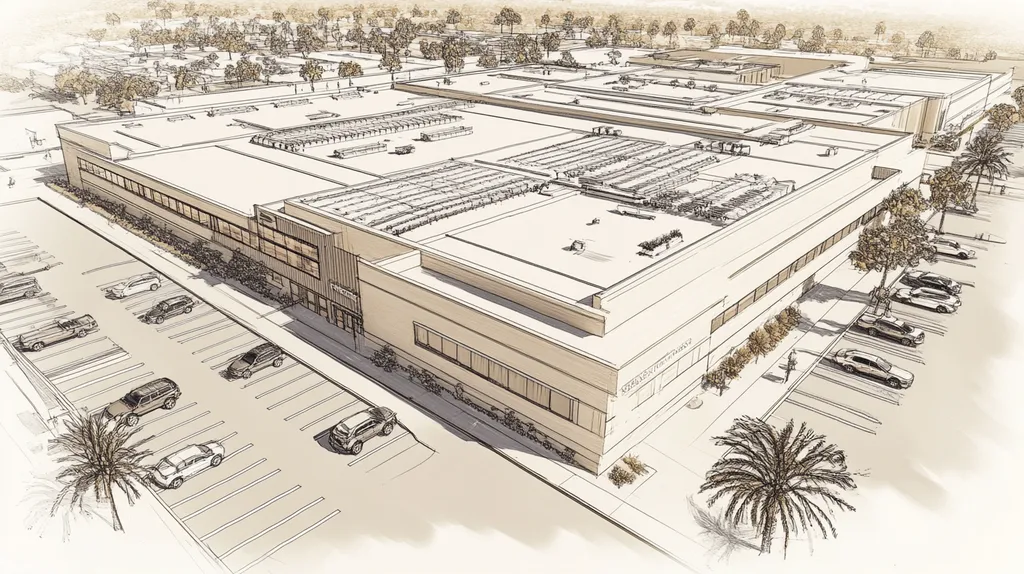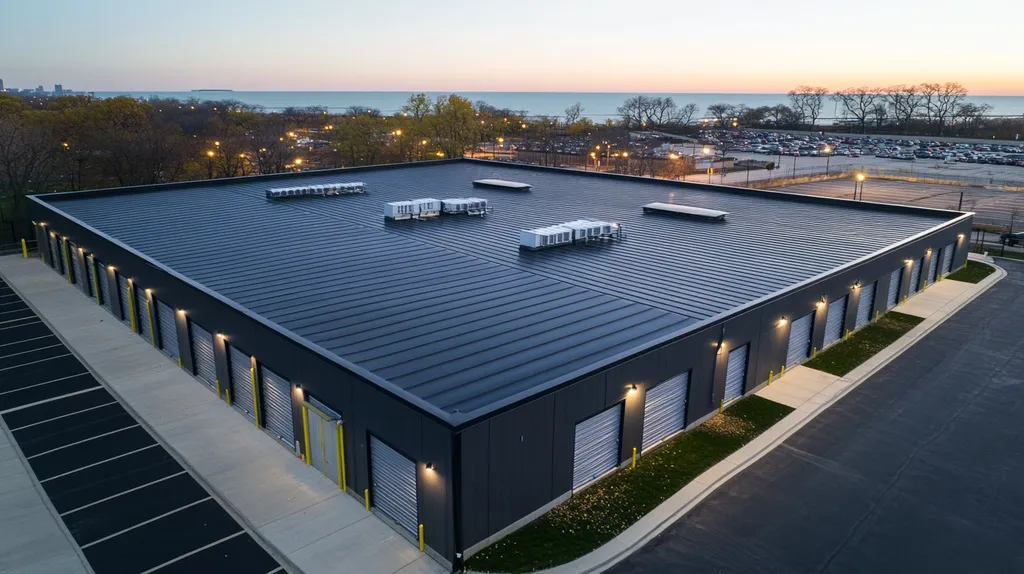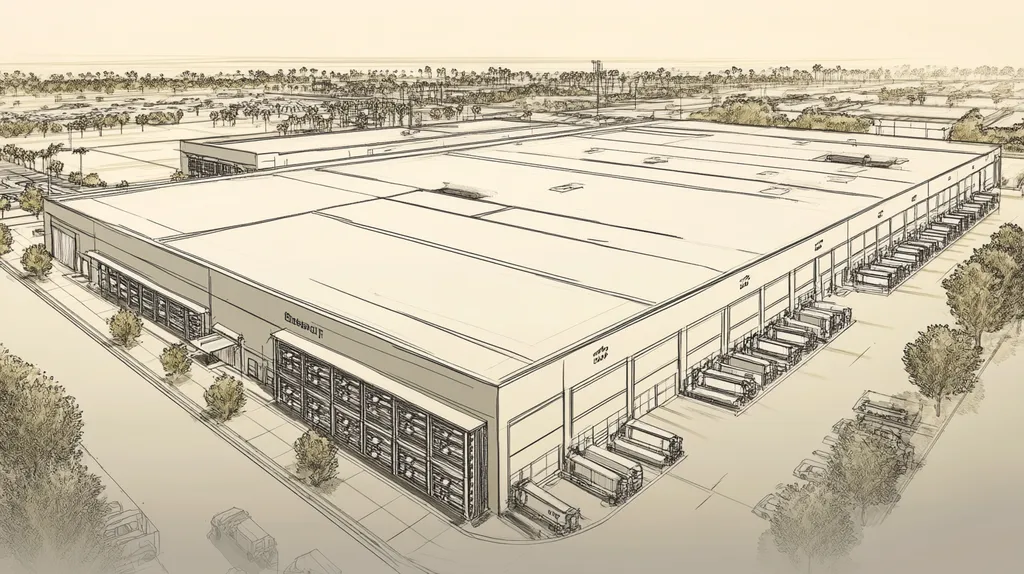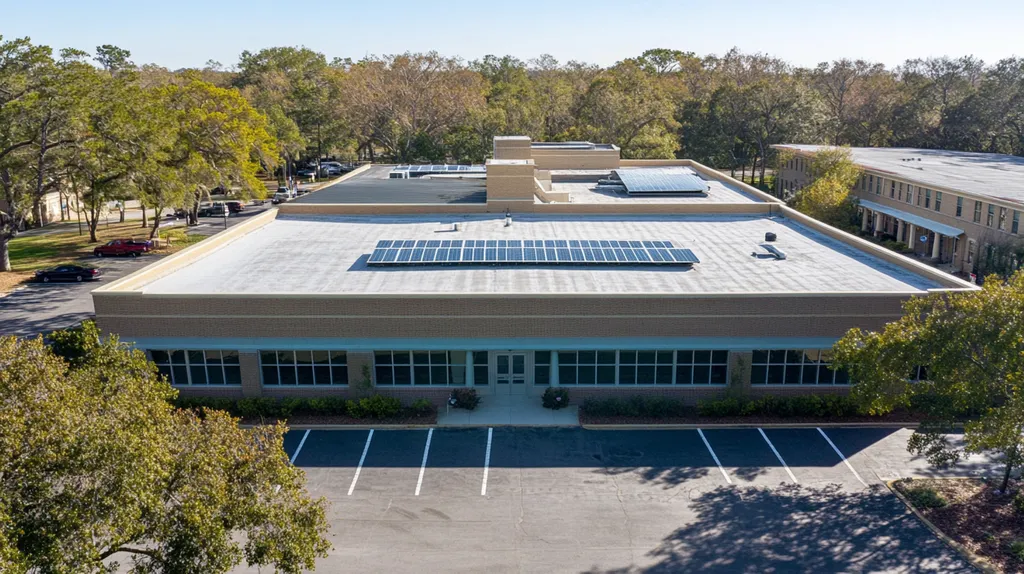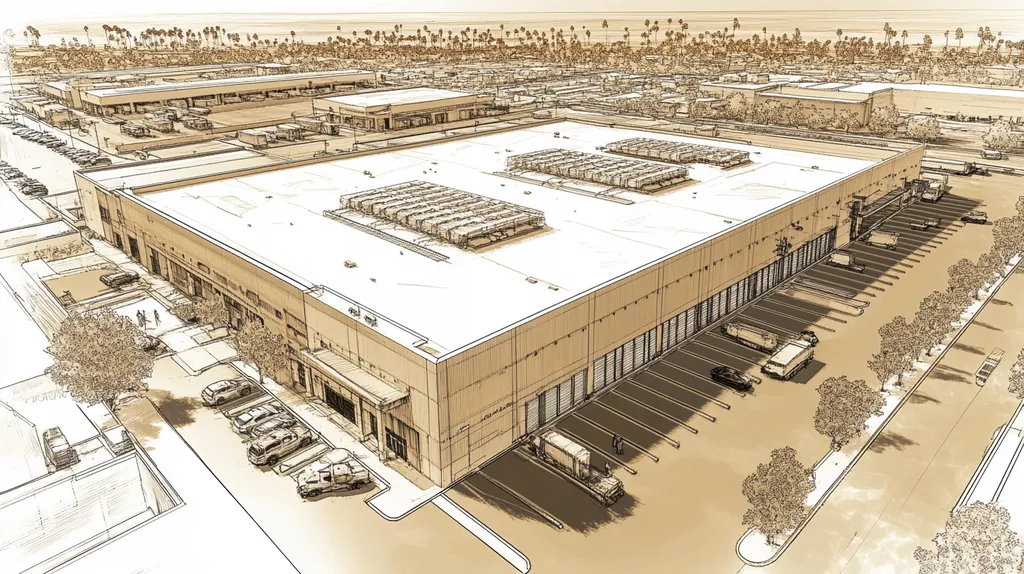As historic commercial buildings face mounting pressure to reduce their environmental impact, property owners grapple with conflicting information about green roofing solutions. With energy costs rising 15% annually and urban heat islands intensifying, the stakes for making informed decisions have never been higher.
Yet misconceptions about structural limitations, preservation standards, and maintenance requirements continue to deter many from exploring these sustainable options. The reality is that modern engineering and design approaches have made green roofs not only feasible but beneficial for many historic structures.
This analysis separates proven facts from persistent myths, examining key considerations for property owners weighing green roofing alternatives for their historic commercial buildings.
SECTION 1: COMMON MISCONCEPTIONS
As the push for eco-friendly solutions gains momentum, many historic commercial buildings face hesitations regarding green roofing. Property owners often remain wary due to concerns about structural integrity and overall aesthetics. Yet, addressing these misconceptions is essential, as it opens doors to both environmental benefits and potential cost savings. This section dismantles the prevalent myths around green roofs on historic structures, empowering informed decision-making.
Green Roofs Are Too Heavy for Historic Buildings
Many believe that green roofs impose too much weight, making them impractical for older structures. However, recent advancements in lightweight materials challenge this assumption. Today’s green roofing systems employ engineered components designed to significantly minimize overall weight.
For example, modular systems equipped with lightweight trays and vegetation place far less strain on the building’s framework. Often, historic buildings can easily adapt to these solutions without sacrificing their structural integrity. Comprehensive structural assessments play a vital role in confirming these buildings’ ability to accommodate modern green technology.
Furthermore, the implementation of a green roof can even redistribute load pressures in a way that reduces strain on the underlying structure. In many instances, retrofitting enables centuries-old buildings to safely integrate contemporary green roofing approaches.
By recognizing these innovative lightweight options, property owners can pursue green roofing without apprehension regarding structural inadequacies. Careful evaluations are essential for verifying the feasibility of such installations.
Historic Buildings Cannot Support Modern Green Roofs
Another common misconception suggests that historic buildings inherently lack the necessary support for state-of-the-art green roofs. This idea disregards the various engineering solutions available for retrofitting these buildings. A detailed evaluation can reveal crucial insights into how existing roofs can be adapted.
Modern engineering techniques can significantly enhance the structural capacity of older buildings, often making them ideal candidates for green roofs. Innovations such as reinforcements and proper drainage systems are designed to manage the additional loads that come from vegetation and soil.
Moreover, historic structures stand to gain from green roofs through enhanced insulation and prolonged lifespan. By investing in this sustainable technology, property owners can protect original architecture from extreme weather, helping to preserve its integrity for future generations.
It is vital for property managers to engage roofing specialists skilled in integrating advanced green technologies with historic architecture. The right solutions not only sustain but can also enrich the building’s historical significance.
Green Roofs Alter Historic Building Aesthetics
Around the country, many stakeholders fear that installing a green roof will clash with the historical aesthetics of their buildings. Contrary to this belief, thoughtful designs can elegantly blend nature with architectural heritage. When approached creatively, green roofs can enhance, rather than diminish, a building’s unique character.
Architectural guidelines frequently advocate for integrating sustainable practices within historic structures, promoting this synergy. Innovative designs often incorporate native plant species that resonate with the building’s historical narrative while boosting its visual charm.
Additionally, strategic planning can ensure that green roofs remain virtually invisible from street level, preserving the façade of the historic structure. This careful consideration minimizes any visual disruption while maximizing ecological advantages.
Ultimately, installing a green roof can refresh historic properties with a modern yet respectful touch. Involving architects and preservationists in the design process can lead to aesthetically pleasing outcomes that honor both history and innovation.
SECTION 2: PRACTICAL IMPLICATIONS
The movement towards green roofing on historical commercial buildings is not without its complexities. Property owners must navigate important concerns about structural integrity, moisture management, and compliance with preservation standards before making decisions. Green roofs can weigh considerably more than conventional roofing systems, raising critical questions about load-bearing capabilities. Addressing moisture and root penetration risks is equally vital; failing to do so can result in extensive damage and steep repair costs.
Structural Integrity and Weight Considerations
Structural integrity is a major concern when considering green roofs for historical buildings. Many older roofs were designed long before green technology became mainstream and therefore may not support the added weight from soil and plants. Depending on the type of system, an intensive green roof can weigh over 100 pounds per square foot, underscoring the need for comprehensive engineering assessments to ensure the structure can safely accommodate this additional load.
Fortunately, modern materials provide weight-saving options. Innovations such as lightweight growth media and modular green systems can significantly ease the burden on roofs. Collaborating with roofing specialists allows property owners to assess and strengthen their historical roofs, ensuring they are up to the task before installation begins.
In some instances, it may be necessary to retrofit structural supports to enhance weight distribution. This process involves examining the roof’s current condition alongside the building’s overall structural integrity. Making these evaluations a priority is essential to prevent future issues and to guarantee that green roofs can be effectively integrated without sacrificing historical value.
With proper planning, these roofs can be added without compromising the aesthetics or safety of the building, melding modern solutions with architectural heritage.
Moisture and Root Penetration Risks
Effective moisture management is crucial when integrating green roofs on historical structures. While vegetation can help regulate water runoff, improper installation techniques can lead to water infiltration, posing severe risks to traditional materials. Historical buildings are especially susceptible to moisture damage, exposing them to problems such as mold growth and structural decay.
To mitigate these risks, high-quality waterproofing membranes are vital. These membranes serve as barriers, preventing moisture from breaching the interior of the building. The importance of selecting durable, dependable materials for this purpose cannot be emphasized enough; they are central to protecting the building’s integrity in the long term.
Moreover, root penetration is another risk related to green roofs. Aggressive plant roots can compromise roofing membranes if not managed properly. Utilizing root-resistant membranes specifically designed for these applications can effectively mitigate this issue.
Careful plant selection must also be considered. Choosing plants with shallow root systems lowers the chances of root-related damages. When moisture and root management are thoughtfully addressed, green roofs can significantly enhance the environment of historical buildings without jeopardizing their structural integrity.
Compliance with Historic Preservation Standards
For property owners considering green roofs, adherence to historic preservation standards is a key factor. Numerous historical buildings are subject to regulations that limit modifications and alterations to their original designs. Ignoring these policies can lead to financial penalties and the potential need to remove non-compliant installations.
Engaging with local preservation organizations and regulatory bodies is crucial before embarking on any green roofing projects. Familiarity with the specific guidelines will help property owners navigate through any potential hurdles they may encounter. Collaborating with experts in historic preservation can provide insights into achieving aesthetic and environmental objectives.
Innovative approaches can seamlessly blend green roofing solutions with preservation requirements. Utilizing traditional materials or replicating historical roof profiles can help fulfill compliance while advancing sustainability commitments.
By prioritizing adherence to preservation standards from the outset, property owners not only contribute positively to their communities’ architectural heritage but also embrace contemporary green practices. This dual commitment creates a harmonious relationship between history and innovation.
SECTION 3: COST OF MISINFORMATION
The potential savings and environmental benefits of green roofing systems for historical commercial buildings are frequently overlooked, primarily due to misunderstandings about their costs. Property owners often assume that installation expenses are far too high, which dissuades them from investing in these sustainable solutions. This narrow perspective can hinder opportunities to enhance building value and efficiency over time. Additionally, there are significant misjudgments regarding ongoing maintenance costs and long-term energy savings that can undermine the overall advantages of these projects.
Overestimated Installation Costs
The initial financial shock often associated with green roofs can lead property owners to abandon the idea entirely. Many are influenced by common misconceptions that exaggerate the upfront costs compared to traditional roofing systems. Although green roofs may carry higher initial expenses, the long-term savings they offer can be substantial. For instance, federal tax credits and local government grants can significantly alleviate installation costs.
Furthermore, when considering the total cost of a roofing system, it’s essential to factor in both initial installation and long-term performance. Green roofs, when properly maintained, tend to outlast conventional roofing solutions. Property owners can ultimately achieve reduced lifecycle costs, making these systems a more economically sound investment than previously thought.
It’s vital for stakeholders to pursue accurate, comparative cost analyses when evaluating roofing choices. Collaborating with knowledgeable contractors and roofing specialists can help clear up financial misconceptions, allowing property owners to see green roofs as a long-term investment rather than merely a short-term expenditure.
Ignoring Long-Term Energy Savings
Facility managers often focus too heavily on upfront costs, neglecting the significant long-term energy efficiencies that green roofs provide. Research has shown that these systems can reduce energy consumption by as much as 25%, offering considerable financial relief for utility bills. This becomes increasingly important as energy costs continue to rise.
In addition to lowering energy consumption, green roofs enhance insulation, thereby minimizing heating and cooling demands. By absorbing sunlight and providing natural insulation, these systems help to stabilize indoor temperatures, contributing to reduced energy expenses. Overlooking these advantages can misrepresent the long-term financial benefits of installing green roofs.
When weighing their options, property owners should regard green roofing not just in terms of initial expenses, but as a multifaceted investment. Shifting the focus to the total cost of ownership enables a clearer understanding of the ongoing value that energy efficiency and enhanced building performance add over the years.
Misjudging Maintenance Requirements
Misinformation about the maintenance of green roofs can deter property owners from pursuing these sustainable solutions. A widespread belief is that green roofs necessitate more extensive upkeep than traditional roofing, which is frequently exaggerated. While they do require regular care to keep plant life healthy, maintenance needs are often overstated.
In reality, many green roofs can be designed for low maintenance, incorporating native plants that thrive with minimal watering and care. This makes the ongoing upkeep much more manageable, especially when compared to the frequent repairs often needed for traditional roofs.
Moreover, a well-designed green roof can help mitigate stormwater runoff, reducing potential damage and maintenance costs associated with conventional drainage systems. By accurately assessing maintenance needs, property owners can confidently embrace green roofing as a viable and sustainable option in their building strategies.
SECTION 4: REALITY CHECK
As the call for sustainable practices grows louder, property owners must grasp the true impact of green roofing on historical commercial buildings. With up to 30% of a building’s total energy use linked to roofs, as noted by the U.S. Green Building Council, the integration of green technology is more than just a matter of style. In this section, we will explore inspiring historical examples of successful green roofs, the invaluable environmental benefits they bring to urban areas, and how these installations enhance the durability and lifespan of buildings.
Historical Examples of Successful Green Roofs
Several historic buildings have embraced green roofs, proving their harmony with heritage architecture. The Brooklyn Grange in New York stands out for not only preserving the building’s historic essence but also transforming it into an urban farm. This rooftop garden plays a crucial role in stormwater management and boosting biodiversity amidst the bustling city skyline.
Chicago’s City Hall, with its remarkable green roof, showcases a successful blend of energy efficiency and historical significance. These examples serve as clear evidence that historic structures can successfully incorporate modern sustainability initiatives without sacrificing their integrity.
Utilizing native plants, these green roofs connect historical legacies with current ecological practices, offering solutions that pay homage to the past while embracing the future. Property owners can find inspiration in such projects, envisioning how they, too, can adapt their buildings to sustain both structure and environment.
In essence, green roofs can serve as functional extensions of historical buildings, delivering essential environmental benefits while celebrating architectural heritage and innovation.
Environmental Benefits in Urban Settings
Urban areas grapple with specific challenges including heat islands and air quality issues. Green roofs rise to the occasion by absorbing heat and enhancing air quality, acting as natural filters that trap pollutants and release oxygen. This transformative ability contributes significantly to the urban landscape.
Research has demonstrated that green roofs can diminish stormwater runoff by up to 90%, a vital function in densely populated cities where excessive rain can overwhelm drainage systems. Recognizing this, cities like Toronto have implemented comprehensive green roof policies to alleviate flooding and boost community resilience.
The cooling effects of green roofs also lower ambient temperatures, which in turn reduces energy costs associated with cooling buildings. This decrease in energy consumption leads to fewer greenhouse gas emissions, spotlighting green roofs as key players in the urban sustainability movement.
Integrating green roofs into urban planning not only enhances building performance but also fosters a healthier environment for all, creating a greener future for cities.
Enhanced Building Durability and Lifespan
Beyond their visual appeal, green roofs significantly extend the lifespan of buildings. By serving as an extra layer of insulation, they shield roofs from extreme temperatures and adverse weather conditions. This protection is crucial in reducing thermal shock, a main contributor to roof degradation.
The vegetation layer also protects roofing materials from harmful UV rays, which can accelerate wear and tear over time. Buildings outfitted with green roofs typically enjoy longer lifespans, minimizing the need for costly repairs and replacements.
This durability translates into considerable financial savings for property owners. With reduced maintenance and less frequent replacements, green roofs represent an attractive return on investment, aligning well with long-term financial strategies.
As a sustainable option, green roofs can seamlessly meld with historical frameworks, enhancing not only aesthetic value but also reinforcing structural integrity for generations to come.
SECTION 5: EVIDENCE-BASED ALTERNATIVES
The integration of green roofs into historical commercial buildings is an essential step towards sustainable architecture. Research indicates that a well-designed green roof can decrease energy expenses by up to 25%. Property owners and facility managers must navigate the intricacies of both ecological benefits and structural preservation. This section dives into effective strategies for designing green roofs, selecting plant species, and integrating these systems with existing building infrastructure.
Designing Green Roofs for Historic Structures
Designing green roofs for historic buildings requires a careful and thoughtful approach. Striking a balance between modern sustainability and the original architectural features of the structure is key. Before installation, evaluating the existing roof’s structural capacity is essential to ensure it can support the new addition.
Utilizing lightweight materials is critical to prevent any harm to the historical integrity. For instance, modular green roof systems help distribute weight evenly, allowing the original design and functionality of the roof to remain untouched.
Engaging with architects who specialize in historical preservation can significantly enhance both utility and visual appeal. These experts can recommend design elements that harmonize with the building’s heritage while maximizing ecological benefits.
Local regulations often impose specific preservation standards that must be adhered to. Being compliant not only avoids legal challenges but also safeguards the building’s historical importance.
Selecting Appropriate Plant Species and Soil
The success of a green roof heavily relies on the careful selection of plant species and soil types. Choosing native plants can substantially reduce ongoing maintenance and irrigation needs, as these species are well-adapted to local climates, which promotes their long-term survival and enhances biodiversity.
The soil layer also demands attention to ensure adequate drainage and aeration. Lightweight growing mediums, specifically formulated for green roofs, minimize additional load on the underlying structure.
Research recommends a soil depth of at least 4 to 6 inches to optimize plant health, retain moisture, and support healthy root systems while ensuring structural safety.
Consulting with local horticulturists can offer invaluable insight into the best plant species suited for the building’s unique microclimate. This partnership can cultivate a thriving green space that flourishes over time.
Integrating Green Roofs with Existing Systems
Successfully incorporating green roofs with existing building systems is critical for optimal performance. Evaluating current drainage systems is vital to ensure they can handle the additional water retention introduced by the green roof. Neglecting this aspect may lead to leaks and potential structural issues.
Implementing sustainable practices, like rainwater harvesting, can further enhance the functionality of the green roof. This method conserves water while also supporting the roof’s vegetation.
Moreover, linking green roofs with HVAC systems can result in substantial energy savings. Studies highlight that living roofs can reduce internal building temperatures, thereby decreasing reliance on air conditioning during warmer months.
Achieving seamless integration typically involves collaboration among various contractors, including roofers, landscapers, and HVAC specialists. Open communication among these parties is essential to ensure both sustainability and the preservation of the historical character of the building.
SECTION 6: TEST AND VERIFY
Implementing green roofing on historical commercial buildings is not merely a stylistic upgrade; it is a vital decision that affects structural integrity, sustainability, and financial viability. The stakes are significant, as improper installations can result in costly repairs and potential structural failures. To ensure successful integration and maintenance of green roofs, property owners must prioritize effective testing and verification processes. This section will delve into the importance of conducting structural assessments, monitoring energy consumption and stormwater runoff, and evaluating long-term performance and maintenance needs.
Conducting Structural Assessments
Before embarking on a green roof installation for a historic building, conducting a thorough structural assessment is indispensable. Many older buildings were not designed to hold additional weight, which can lead to unforeseen stress on the structure. Engaging an experienced expert to evaluate the existing roof system is crucial; this involves examining load-bearing capacity and the materials used.
Employing techniques such as load tests can yield valuable insights into the roof’s ability to support the new green system. With this information, property owners can make informed decisions regarding any necessary reinforcements or modifications. Taking a proactive approach in this regard can mitigate costly failures and prolong the life of both the green roof and the building itself.
Furthermore, collaborating with structural engineers accustomed to working with historic architecture is essential. Their expertise can reveal specific challenges and guide appropriate modifications that uphold the building’s historical significance. Documenting all assessments lays the groundwork for ongoing safety and compliance.
In summary, performing detailed structural assessments paves the way for safe, successful green roofing projects that strike a balance between modern innovation and historical preservation.
Monitoring Energy Consumption and Stormwater Runoff
Monitoring the effectiveness of green roofs extends beyond aesthetics; it directly relates to energy efficiency and environmental sustainability. After installation, property owners should systematically track energy consumption. Green roofs can provide excellent insulation, leading to noticeable reductions in heating and cooling expenditures when designed and integrated correctly.
Implementing energy monitoring systems will yield critical data. With this information, property managers can assess energy savings and fine-tune building operations as necessary. Such actions not only bolster cost-effectiveness but further support overarching sustainability goals.
Stormwater management is another pivotal area that demands attention. Green roofs are adept at absorbing rainwater, which can substantially reduce runoff and the risk of flooding. Regular monitoring of stormwater retention is essential to evaluate the green roof’s effectiveness in managing precipitation and promoting water conservation.
By keeping tabs on energy use and stormwater impacts, property owners can quantify the myriad benefits associated with green roofing. This data serves as a compelling advocacy tool for initiating similar projects, showcasing the tangible advantages in financial and environmental realms.
Evaluating Long-Term Performance and Maintenance Needs
The long-term success of green roofs is heavily reliant on ongoing maintenance and regular evaluations. Property owners should conduct routine inspections to assess plant health, root development, and drainage capacity. Early detection of any potential issues can prevent costly repairs and sustain the ecological benefits of the roof.
Establishing a maintenance plan is critical for maximizing the roof’s advantages. This plan may encompass scheduled watering, periodic weeding, and soil testing to ensure optimal conditions for plant health. Keeping a detailed record of maintenance activities also provides a historical reference, useful for funding and future improvements.
Additionally, property owners should define metrics to assess overall performance. Key indicators could include energy savings, stormwater retention rates, and the general health of the green roof ecosystem. Regular reporting on these metrics not only ensures accountability but also illustrates the roof’s impact over time.
Ultimately, prioritizing long-term performance and maintenance extends the life of green roofs while maximizing their environmental and economic benefits.
Moving Forward
With urban temperatures rising 2-3°F per decade and commercial energy costs surging annually, the integration of green roofs into historical buildings has become an environmental and economic imperative.
The evidence demonstrates that properly engineered green roofing systems can reduce energy consumption by up to 25% while extending roof lifespan by 200-300%.
By dispelling common misconceptions about structural limitations and maintenance requirements, property owners can make informed decisions that balance preservation with sustainability.
The successful examples from Chicago’s City Hall to Brooklyn Grange prove that historical buildings can embrace green technology without compromising architectural integrity.
The path forward requires careful engineering, appropriate plant selection, and systematic monitoring – but the environmental and financial rewards make this transformation essential for urban sustainability.
FREQUENTLY ASKED QUESTIONS
Q. Are green roofs too heavy for my historical commercial roof?
A. Many older roofs can support the added weight of modern green roofs with proper evaluation. Innovations in lightweight materials allow these systems to minimize strain on historical structures. Comprehensive assessments can confirm the capability of your building to accommodate green roofing without compromising integrity.
Q. How do I assess my historical building’s structural integrity for an industrial roof?
A. It’s essential to conduct a detailed structural assessment before adding a green roof. Engaging experienced structural engineers can help evaluate load-bearing capabilities and identify necessary reinforcements. This proactive approach ensures both the safety of the building and the seamless integration of the new roofing system.
Q. What are the misconceptions about green roofs and historical buildings?
A. Common misconceptions include fears about heavy weight, aesthetic clashes, and structural risks. However, modern engineering allows for lightweight systems that blend aesthetics with environmental benefits, making them viable for historical buildings. Understanding these facts can encourage informed decisions around sustainable roofing options.
Q. How can green roofs enhance my historical commercial building’s value?
A. Green roofs improve energy efficiency, which can lower utility costs and enhance building value. They also create appealing spaces that attract tenants and customers. Moreover, the environmental benefits contribute to a building’s marketability, aligning with sustainable practices sought by modern occupants.
Q. Are the maintenance needs of industrial roofs oversold?
A. Maintenance needs for green roofs are often exaggerated. Many can be designed for low upkeep, using native plants that thrive with minimal care. Regular inspections and simple maintenance plans can ensure the longevity of the roof without imposing excessive burdens on building owners.
Q. How can I ensure compliance with preservation standards for historical roofs?
A. Engaging with local preservation organizations early in the planning process is crucial. Familiarize yourself with regulations and collaborate with experts in historical preservation. This approach helps ensure that green roofing designs meet compliance and retain the building’s historical integrity while promoting sustainability.
Q. What plants are best for green roofs on historical buildings?
A. Selecting native plants suitable for your local climate is ideal for green roofs. Native plants require less maintenance and are well-adapted to local conditions, enhancing biodiversity. Collaborating with local horticulturists can help identify the best species that thrive in your building’s unique microclimate.

